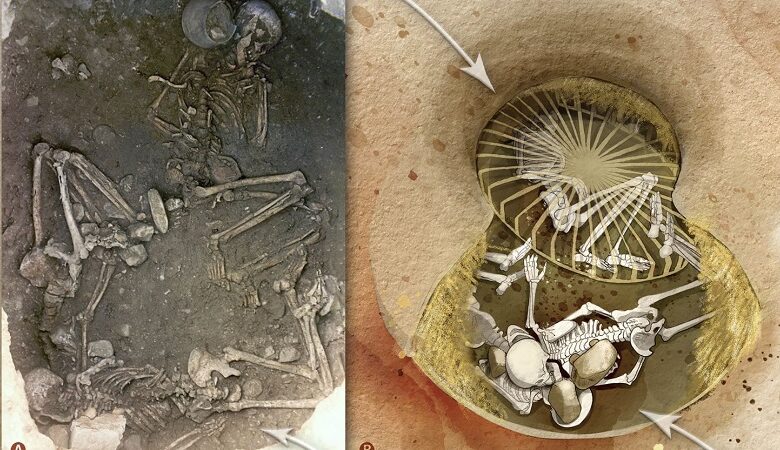Unearthing the Ancient Fear: Live Burial in the Neolithic Period

Agnibeena Ghosh/17th April 2024
In the annals of human history, burial practices have always held a significant cultural and symbolic importance. However, amid the reverence for the deceased lies a darker aspect: the fear of being buried alive. This fear, though often associated with modern times, has deep roots in ancient history, particularly during the Neolithic Period.
The Neolithic Period, often referred to as the New Stone Age, spanned roughly from 10,000 BCE to 2,000 BCE, marking a significant transition in human history with the advent of agriculture and sedentary lifestyles. During this time, communities began to develop more complex social structures, religious beliefs, and burial customs.
One of the most haunting aspects of Neolithic burial practices is the evidence suggesting the occurrence of live burials. While direct archaeological evidence is sparse, anthropologists and archaeologists have pieced together clues from burial sites, cultural artifacts, and ethnographic studies of contemporary societies to shed light on this ancient phenomenon.
In Neolithic societies, death was often viewed as a transformative process, marking the transition of the deceased to the afterlife or the spirit world. However, alongside this spiritual understanding of death existed pragmatic concerns, such as ensuring that the deceased did not return to haunt the living or cause harm.
Live burial may have been practiced as a means of accompanying the deceased into the afterlife or as a way to prevent the deceased from returning as a malevolent spirit. While these motives may seem alien to modern sensibilities, they reflect the deeply ingrained beliefs and fears of Neolithic communities.
Evidence for live burial in the Neolithic Period is largely circumstantial but compelling. Archaeological excavations have revealed graves containing the skeletal remains of individuals in unusual positions, such as with their hands bound or with signs of trauma consistent with attempts to escape confinement. These findings suggest that some individuals may have been buried alive or placed in graves before death.
Moreover, ethnographic studies of contemporary cultures with similar burial practices offer insights into the possible motivations behind live burials. In some cultures, live burial is believed to facilitate the deceased’s journey to the afterlife or to prevent the deceased from returning as a vengeful spirit. These cultural parallels lend credence to the possibility that similar beliefs and practices existed in Neolithic societies.
The fear of being buried alive was not limited to individuals awaiting burial but also extended to the living. Tales and folklore from various cultures around the world attest to the widespread fear of premature burial and the measures taken to prevent it. In the absence of modern medical technology, determining whether a person was truly dead could be a daunting task, leading to the adoption of precautionary measures such as leaving bells or strings in coffins to allow the buried individual to signal for help if they regained consciousness.
The prevalence of live burial in the Neolithic Period underscores the complex interplay between cultural beliefs, religious practices, and pragmatic considerations surrounding death and burial. While modern sensibilities may recoil at the thought of such practices, they offer valuable insights into the worldview and lived experiences of our ancient ancestors.






